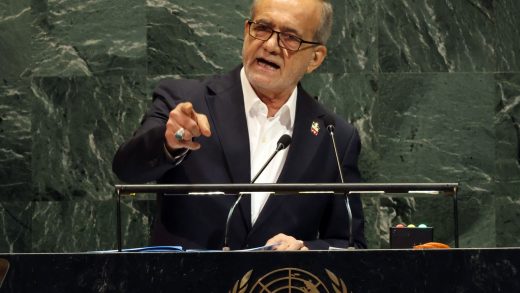The next phase of the Gaza peace plan brokered by President Trump moved forward significantly on Monday as Hamas released all of the 20 living Israeli hostages in exchange for hundreds of Palestinian prisoners, and as more aid started to flow into the Palestinian territory after two years of war.
The steps are crucial parts of President Trump’s 20-point peace plan, and they came three days after a ceasefire took effect in Gaza and Israeli troops pulled back to a pre-determined line.
World leaders, including Mr. Trump, were meeting in Egypt on Monday for a summit on the future of Gaza and the broader Middle East.
But the situation remains fragile, with major questions over what comes next still to be answered.
Negotiations over next steps
Israel and Hamas have little trust in each other, and it took a number of failed, indirect negotiations in Doha, Qatar’s capital, to get to the truce, with Egypt and Qatar acting as meditators.
The initial phases of the agreement called for: the release of the final hostages held by Hamas, living and dead; the release of hundreds of Palestinian prisoners held by Israel; a surge of humanitarian aid to Gaza; and a partial pullback by Israeli forces from Gaza’s main cities.
Egypt’s foreign minister said on Monday that it was crucial that Israel and Hamas fully implement the first phase of the deal so that the parties can start negotiations on the second phase. As of Monday evening, all living hostages were back in Israel, but the remains of many of the slain captives remained in Gaza.
Later phases of the plan will have to address thornier issues such as Gaza’s postwar governance, Israel’s demand that Hamas disarm, which the group has rejected, and Palestinian demands for a state, which the current Israeli government has rejected.
Negotiations over those issues could break down, and Israel has hinted it may resume military operations if its demands are not met.
President Trump’s plan to end the war also stipulates that regional and international partners will work to develop the core of a new Palestinian security force.
Reconstruction will be another major challenge. The World Bank, and a postwar plan proposed by Egypt, estimates that at least $53 billion will be needed to rebuild the shattered Palestinian territory. Egypt plans to host a future reconstruction conference.
Will Hamas disarm?
Among the most difficult issues is Israel’s insistence that a weakened Hamas completely disarm. Hamas refuses to do that and wants to ensure Israel pulls its troops completely out of Gaza.
So far, the Israeli military has withdrawn from Gaza City, the southern city of Khan Younis and other areas, but it remains in control of about 53% of the enclave, according to Israeli officials. Troops remain in most of the southern city of Rafah, towns of Gaza’s far north, and a wide strip along the length of Gaza’s border with Israel.
Israeli Prime Minister Benjamin Netanyahu said Friday that Israel was “tightening the noose around Hamas from all sides,” and vowed that Gaza would be demilitarized after the Israeli government approved the peace plan, which it did hours later.
“Hamas will disarm and Gaza will be demilitarized. If this can be achieved the easy way, all the better; if not, it will be achieved the hard way,” Netanyahu said, addressing reporters.
Who will govern Gaza?
Israel and Hamas have not agreed on Gaza’s postwar governance.
Under the U.S. plan, an international body is supposed to govern the Palestinian territory, overseeing Palestinian technocrats running day-to-day affairs. Hamas and other factions would not have any role in Gaza’s governance.
The plan envisions an eventual role for Palestinian leader Mahmoud Abbas’ Palestinian Authority — something Netanyahu has long opposed. But it requires the authority, which administers parts of the West Bank, to first undergo a sweeping reform program, and it does not provide any timeline for the process.
Hamas has said Gaza’s government should be worked out among Palestinians.
The deal also recognizes an independent Palestinian state as, “the aspiration of the Palestinian people,” but it’s unclear if or when discussions on statehood could take place, and Israel’s Netanyahu has repeatedly said he will not allow the creation of a Palestinian state.
International security force
The plan calls for an Arab-led international security force in Gaza, along with Palestinian police trained by Egypt and Jordan. It says Israeli forces will leave additional areas as those forces deploy.
Under the plan, the force would work with Israel and Egypt to help secure border areas, along with the newly trained Palestinian police forces.
Egyptian Foreign Minister Badr Abdelatty said the international force needs a U.N. Security Council resolution to endorse its deployment and mandate as a peacekeeping force.
About 200 U.S. troops are now in Israel to monitor the ceasefire and the early stages of the peace plan. They were expected to carry out that work in conjunction with partner nations, nongovernmental organizations and private-sector players.


